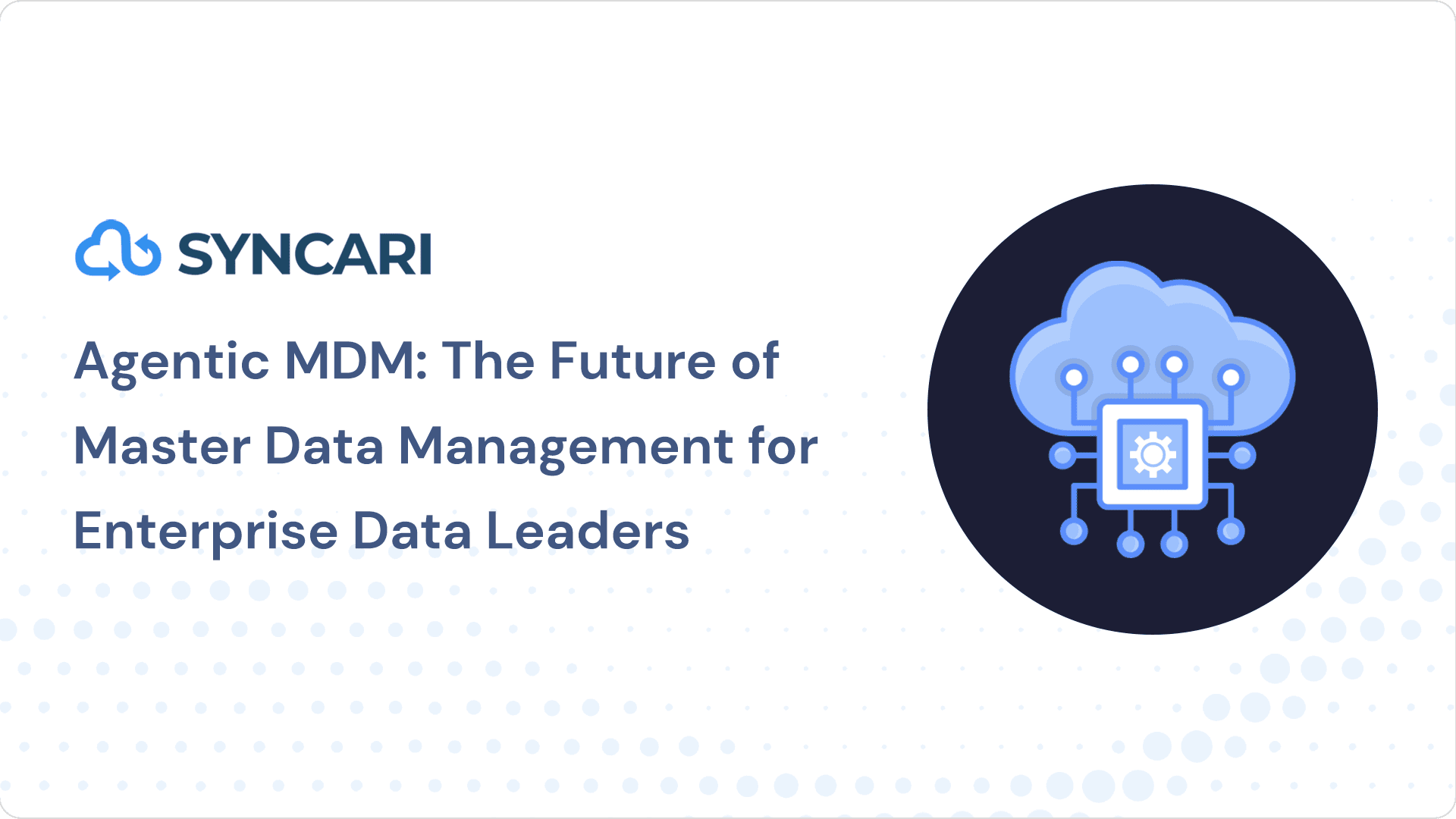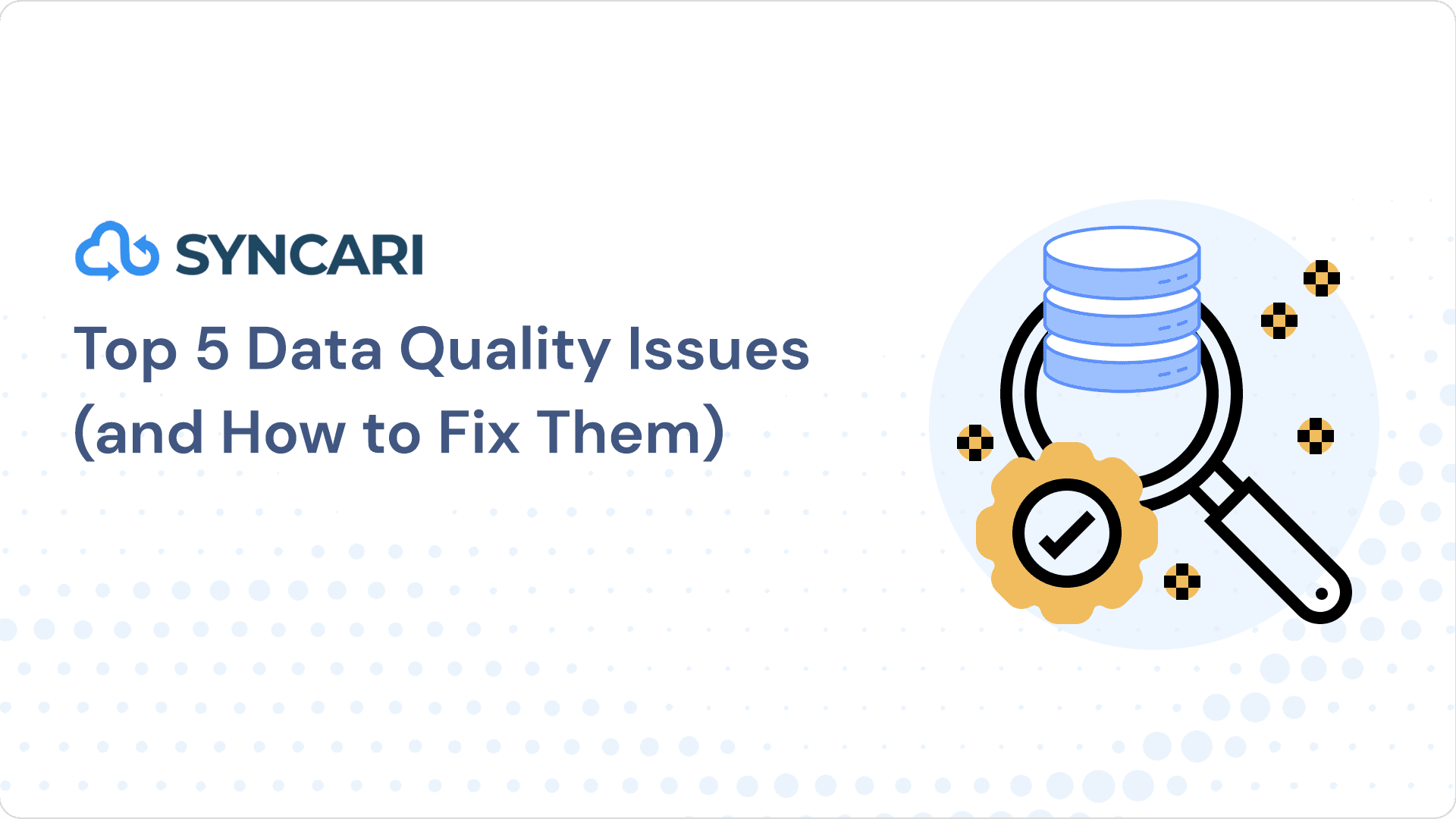Slack and Jira are two popular tools used by teams to manage projects and collaborate effectively. Slack is a messaging platform that allows teams to communicate in real-time, while Jira is a project management tool that helps teams track and manage their work.
The integration between Slack and Jira allows teams to streamline their workflow and improve communication. With the integration, users can receive notifications and updates about their Jira issues directly in their Slack channels. They can also create new Jira issues, assign them to team members, and comment on existing issues, all from within Slack.
[Related: Automate Data to Create Customer 360]
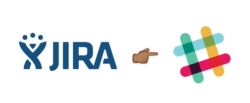
Some of the benefits of the Slack and Jira integration include:
- Improved collaboration: The integration allows teams to work together more effectively by keeping everyone informed and up-to-date on project progress.
- Increased productivity: With the ability to create and manage Jira issues directly from Slack, teams can save time and work more efficiently.
- Better communication: The integration helps to bridge the gap between different teams and departments by making it easy to share information and collaborate on projects.
Overall, the Slack and Jira integration is a powerful tool that can help teams work together more effectively and efficiently, but is it really the best option for your needs? Let’s dig in.
How do I setup Jira integration in Slack?
To set up a Slack integration with Jira, follow these steps:
1. Go to the Slack App Directory and search for “Jira Cloud.”
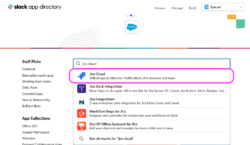
2. Install the “Jira Cloud” app to your Slack workspace.
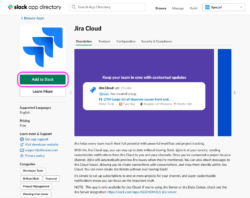
3. Give Permission for Jira to Integrate With Slack – Read all the details, then click “allow.” If you’ve changed your mind, hit “cancel,” instead.
4. In Jira, navigate to the “Settings” menu, then click on “Applications.”
5. Click on “Discover new applications,” then search for “Slack.”
6. Click on “Get it now” to install the “Slack for Jira Cloud” app.
7. Follow the prompts to authorize the app to access your Slack workspace.
8. Once authorized, configure the notifications you want to receive in Slack by clicking on “Add Configuration” in the “Slack for Jira Cloud” app in Jira.
9. Choose the Jira events that should trigger a Slack notification, such as issue creation or status changes.
10. Select the Slack channels where you want to receive notifications.
11. Customize the notification message format and content using the available options.
12. Save your configuration settings.
Once the integration is set up, you can customize the notifications that you receive in Slack and configure the integration to suit your needs. For example, you can set up notifications for specific types of Jira issues or configure custom notifications based on specific triggers or events (see here for specifics).
How do I automate Slack and Jira?
Here’s how to create automations using this integration:
- Install the “Jira Cloud” app and the “Slack for Jira Cloud” app in your Slack workspace and Jira Cloud instance, respectively.
- Configure the notifications you want to receive in Slack by clicking on “Add Configuration” in the “Slack for Jira Cloud” app in Jira.
- Choose the Jira events that should trigger a Slack notification, such as issue creation or status changes.
- Select the Slack channels where you want to receive notifications.
- Customize the notification message format and content using the available options.
- Save your configuration settings – Jira offers a small number of automation templates.
With this integration, you can create multiple notification configurations to trigger different Slack messages for different Jira events. Additionally, you can use different message formats, such as pre-built templates or custom formats, depending on your preferences.
It’s important to note that while this integration provides a powerful set of automation features, it may have some limitations in terms of customization and flexibility based on the Jira plan your company subscribes to. Therefore, if you require more complex automations or specific customization options, using Slack messages with Jira Software Cloud Premium (double the standard pricing plan) at a minimum might be a better option for you.
Potential problems with the Jira-Slack Integration
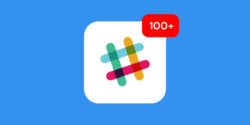
The Slack and Jira integration is a powerful tool that allows teams to stay informed about the status of their Jira projects without leaving Slack. However, there are a few common problems, issues, and limitations that users should be aware of:
- Inadvertently create data silos: Sure, Jira + Slack applications are integrated and sync, but what about the other teams that may work out of applications such as Salesforce and Zendesk? Good thing, Syncari can easily bridge that gap with its single platform to unify data, activate insights and power your entire go-to-market.
- Overwhelming notifications: One of the most common problems with the Slack and Jira integration is the potential for an overwhelming number of notifications. If you’re not careful, you could end up with a barrage of messages that make it difficult to focus let alone prioritize.
- Limited functionality: While the Slack and Jira integration is useful for tracking project updates and receiving basic notifications (e.g. personal notifications), it does have some limitations when it comes to functionality. For example:
- If you request information on a specific Jira Cloud issue, the information will only be visible to the person who used the command.
- Replies in threads will not be captured in Jira. You can turn a “finished” thread into a Jira ticket, but additional replies will not be captured.
- Difficult to integrate additional applications into the workflow.
- Configuration issues: Setting up the integration between Slack and Jira can be tricky, especially if you’re not familiar with the configuration options available. Getting everything set up properly can be time-consuming and frustrating.
It is important to note that these are just potential problems, and the actual experience may vary depending on the specific implementation.
Try Syncari to push Jira updates to Slack
Syncari is ideal for integrating Jira and Slack because it is a no-code platform that is designed to automate and streamline customer data workflows. It can help you to solve common data challenges such as data inconsistencies, integration challenges, and data quality issues.
Syncari uses a patented multi-directional stateful sync engine to unify data from multiple sources, and to orchestrate cross-team processes. It provides a single platform for managing data, orchestrating GTM stack, analyzing GTM impact, and exchanging signals across revenue tech stacks.
Here are some of the benefits of using Syncari to integrate Jira and Slack:
- No-code: Syncari is a no-code platform, which means that you do not need any coding or technical expertise to use it. This makes it a good choice for businesses that do not have a lot of IT resources.
- End-to-end workflows: Stop attempting to weave disparate integrations together. Build actual workflows that will coherently unify customer data.
- Data consistency: Syncari can help you to achieve data consistency across all your systems, not just Jira and Slack. This is important because it will help you to get accurate and reliable data across the board.
- Cross-team processes: Syncari can help you to orchestrate cross-team processes which include but are not limited to sales, customer support, and engineering.
- GTM impact: Syncari can help you to analyze the impact of your GTM stack. This includes tasks such as measuring the effectiveness of your marketing campaigns and the efficiency of your sales team. Syncari can also help you to manage your GTM stack. This includes tasks such as lead generation, lead nurturing, and customer onboarding.
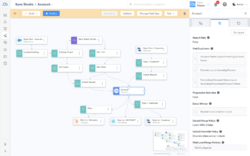
For example, at Syncari we have workflows that involve Jira + Slack but that isn’t nearly enough without Zendesk for our Support team. Our internal Syncari instance is set up with a specific flow to alert Support teams of any resolved bugs or feature requests (Jira) via a Slack message. This helps us keep track of which customers need to be notified once the bug(s) or feature request(s) are resolved.
Previously our Support team had to manually check Jira to keep track of the Jira requests to ensure customers were notified upon resolution. Now with the Slack + Jira + Zendesk integration built into Syncari, it’s easy to link Zendesk tickets to Jira tickets; when a Jira ticket is closed, the team will receive a Slack notification to contact the customer to inform them of the resolution.
Syncari helped target notifications that are more meaningful to the Support team instead of sending Slack notifications for Jira tickets to one or more channels.
What’s best for your business?
Ultimately the Slack and Jira integration offers many benefits, including improved collaboration, increased productivity, and better communication. Setting up the integration is relatively straightforward, and users can customize notifications and automations to suit their needs. However, there are also potential problems and limitations, such as limited functionality and overwhelming notifications.
If you’re looking to build sustainable data automations across multiple applications and avoid data silos, try using Syncari, which offers a single platform to align, analyze and activate optimal data throughout your GTM stack. Think you can upscale your business with data? Try out Syncari for 30 days risk-free, or opt for a custom demo to see what you can unlock with the power of data.
